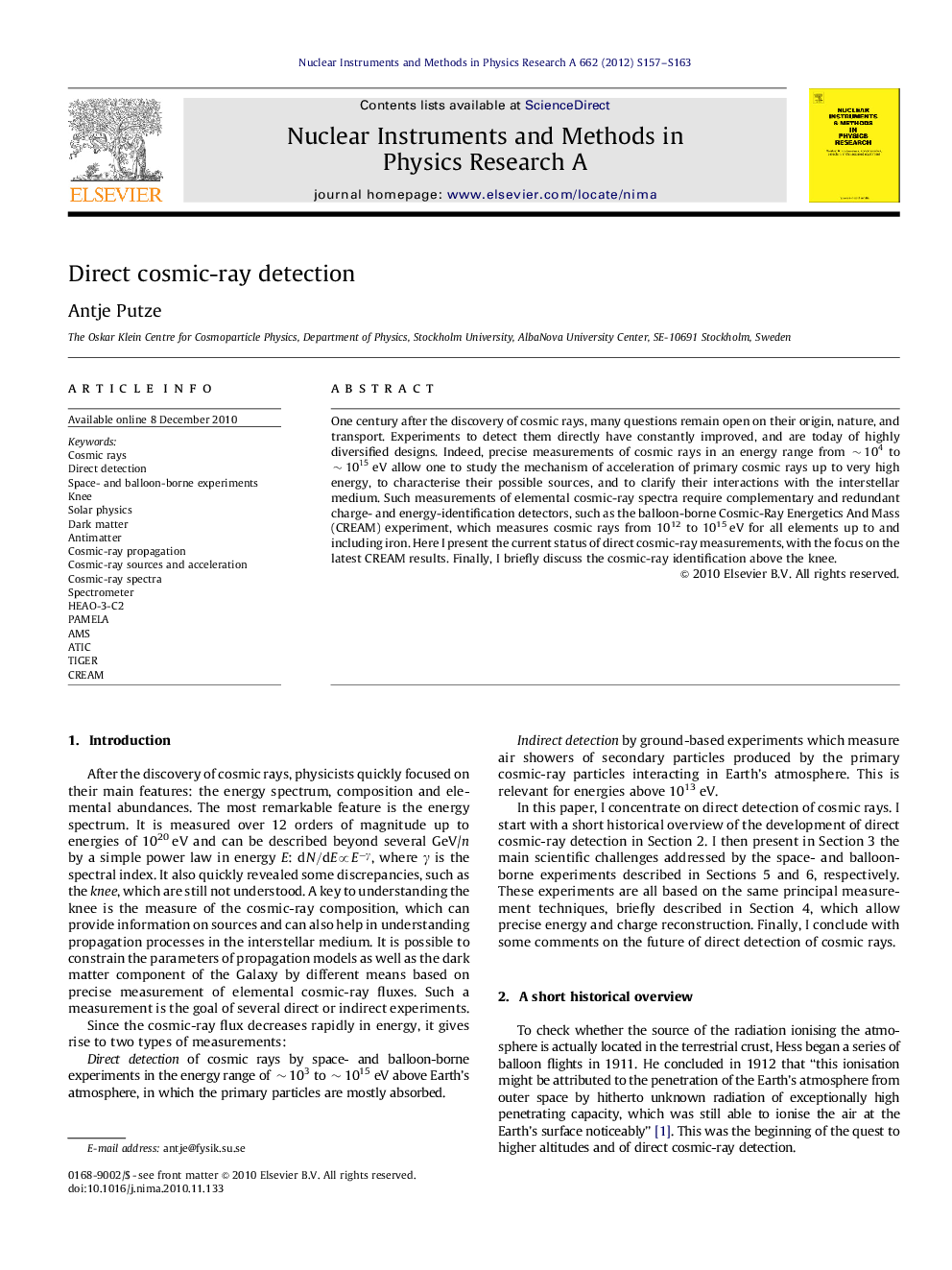| Article ID | Journal | Published Year | Pages | File Type |
|---|---|---|---|---|
| 1823943 | Nuclear Instruments and Methods in Physics Research Section A: Accelerators, Spectrometers, Detectors and Associated Equipment | 2012 | 7 Pages |
Abstract
One century after the discovery of cosmic rays, many questions remain open on their origin, nature, and transport. Experiments to detect them directly have constantly improved, and are today of highly diversified designs. Indeed, precise measurements of cosmic rays in an energy range from â¼104 to â¼1015eV allow one to study the mechanism of acceleration of primary cosmic rays up to very high energy, to characterise their possible sources, and to clarify their interactions with the interstellar medium. Such measurements of elemental cosmic-ray spectra require complementary and redundant charge- and energy-identification detectors, such as the balloon-borne Cosmic-Ray Energetics And Mass (CREAM) experiment, which measures cosmic rays from 1012 to 1015Â eV for all elements up to and including iron. Here I present the current status of direct cosmic-ray measurements, with the focus on the latest CREAM results. Finally, I briefly discuss the cosmic-ray identification above the knee.
Keywords
Related Topics
Physical Sciences and Engineering
Physics and Astronomy
Instrumentation
Authors
Antje Putze,
